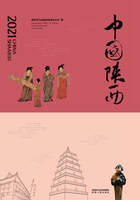
International Exchange and Cooperation
1.Economic Cooperation Gaining Strength
Over 50 enterprises and scientific research institutions in the Belt and Road countries settled down in Sino-Russian Silk Road High-tech Innovation Park, including Leafer Group and Sino-Russian Joint Laboratory of Ocean Engineer. Distribution networks, production bases and logistics parks were set up by enterprises such as Xi'an Aiju Grain and Oil Industrial Group and Longji Group in the Belt and the Road countries.
Yangling Area of China (Shaanxi) Pilot Free Trade Zone has established cooperative relations with more than 60 countries in modern agriculture. 11 international cooperative research institutions and foreign-invested enterprises settled in Yangling International Agri-Science Innovation Port. Six modern agricultural demonstration parks have been built in the United States, Kazakhstan and other countries to promote the exchange of agricultural technology, new varieties and agricultural equipment.
2.Cultural Exchanges Getting Intense
151 colleges and universities from 38 countries and regions have participated in the University Alliance of the Silk Road and the Belt and Road Vocational Education Alliance, serving as a platform in promoting international cooperation in the education sector.
Great efforts were exerted in constructing cultural exchange platforms, including Euro-Asia Economic Forum, Silk Road International Expo, Silk Road International Cultural & Arts Festival, and Silk Road International Film Festival, together with the establishment of the Cultural Art Bonded Exhibition Center, Silk Road Cultural Exchange Center, and Silk Road Archaeological Center. The communication among the Belt and Road countries has enhanced in cultural and trade sectors, making people from different nations more and more closely linked.
Xi'an Jiaotong University has reached the will of jointly building the Belt and Road Health Community with colleges, universities and medical institutions from 22 countries and regions.
The "diplomatic envoys" and "cultural cards"represented by the Terracotta Warriors and Horses have become important platforms for national foreign affairs and cultural exchanges.